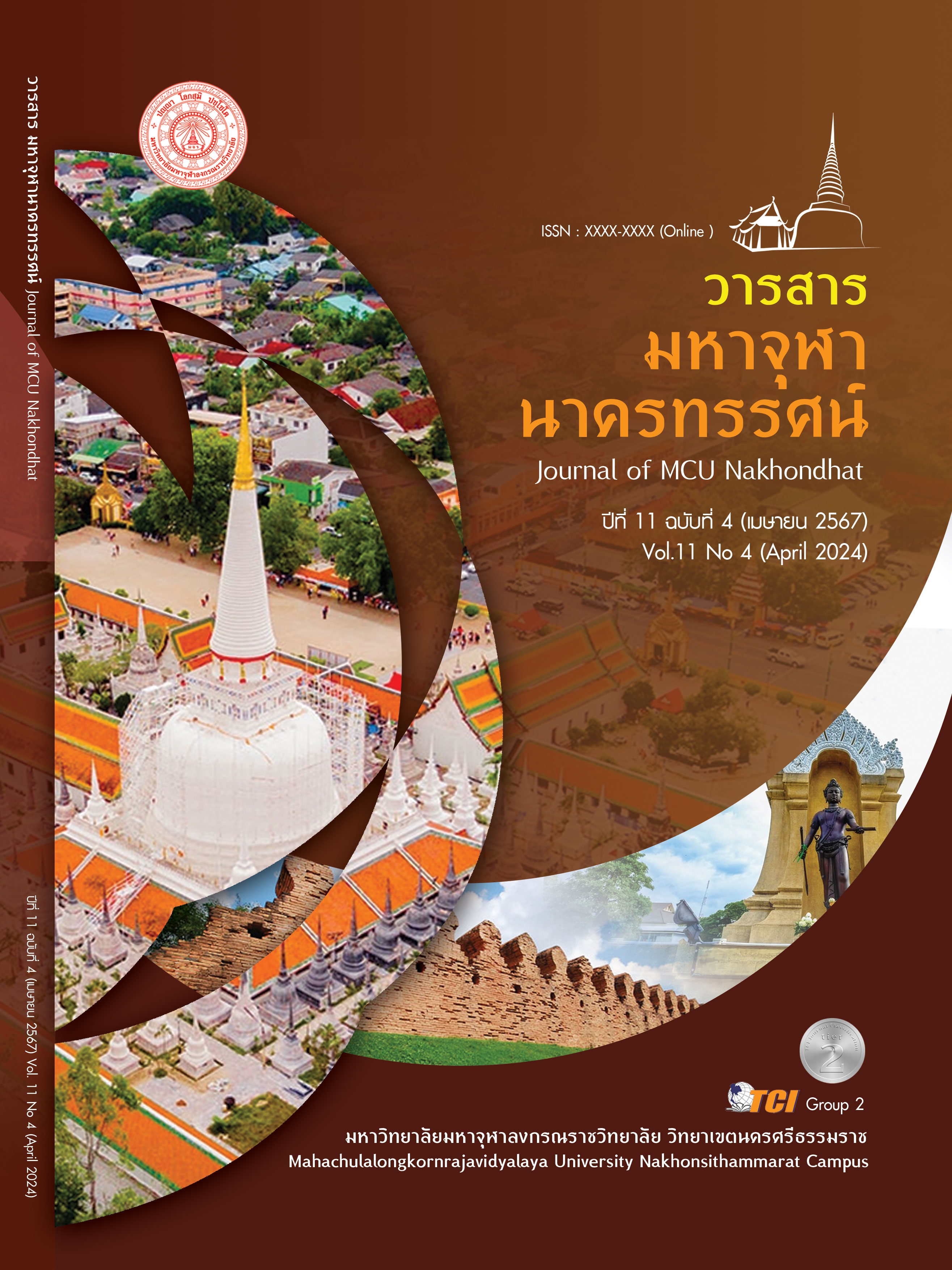THE EFFECTS OF BLENDED LEARNING IN THE NEW NORMAL : PROFESSIONAL LEARNING COMMUNITY OF SRINAKHARINWIROT UNIVERSITY PRASARNMIT DEMONSTRATION SCHOOL (SECONDARY)
Main Article Content
Abstract
This aims of this research was to 1) Synthesize of blended leaning in the New Normal model and 2) Study the effectiveness of learning model in learning achievement, students’ satisfaction, teachers’ satisfaction, and parents satisfaction with the learning model. The study was conducted in two phases, phase 1 was the synthesis of blended leaning in the New Normal process from theoretical concepts and exploring student readiness to be analyzed as a conceptual framework for various models, and phase 2 was the study process on effectiveness of blended learning in the New Normal. The research samples in this study were 30 teachers, 255 parents and students in semester 1 of 2021 academic year. All students in this study were 105 students from lower secondary level and 220 students from high school level from group sampling. The results were: 1) The developed blended leaning in the New Normal model were done in 3 stages which are Stage 1: Preparation, Stage 2: Teaching employed blended learning and PLC, and Stage 3: Revision and Reflection 2) The effectiveness of blended leaning in the New Normal model were as follows, 2.1) Students’ learning achievement was 70 percent significantly higher than the criteria after taking the learning. 2.2) Students’ satisfaction with learning shows that 81.20 percent of the students’ satisfaction were at a high to a highest level. 2.3) Parents’ satisfaction with learning shows that 83.80 percent of the parents’ satisfaction were at a high to a highest level. 2.4) Teachers’ satisfaction with learning shows that 79.60 percent of the teachers’ satisfaction were at a high to a highest level.
Article Details

This work is licensed under a Creative Commons Attribution-NonCommercial-NoDerivatives 4.0 International License.
References
เกริกเกียรติ นรินทร์. (2563). การพัฒนาการเรียนการสอนแบบผสมผสานด้วยเทคนิคเรียนรู้แบบร่วมมือ TGT เพื่อส่งเสริมทักษะการคิดอย่างมีวิจารณาญาณและการทำงานเป็นทีม วิชา เทคโนโลยี (วิทยาการคำนวณ) ของนักเรียนชั้นประถมศึกษาปีที่ 5. ใน วิทยานิพนธ์การศึกษามหาบัณฑิต สาขาเทคโนโลยีและสื่อสารการศึกษา. มหาวิทยาลัยมหาสารคาม.
นวลลออ พลรักษา. (2561). โมเดลสมการโครงสร้างปัจจัยที่มีอิทธิพลต่อการเป็นชุมชนแห่งการเรียนรู้ทางวิชาชีพสำหรับสถานศึกษาขั้นพื้นฐาน. วารสารบริหารการศึกษา มหาวิทยาลัยขอนแก่น, 14(2), 55-66.
นารียา เจะโนะ. (2564). การพัฒนารูปแบบการจัดการเรียนการสอนแบบผสมผสานที่ส่งเสริมผลสัมฤทธิ์ทางการเรียนวิชาทักษะการเรียนรู้ สำหรับนักเรียนมัธยมศึกษา ศูนย์การศึกษานอกระบบและการศึกษาตามอัธยาศัยอำเภอปะนาเระ จังหวัดปัตตานี. ใน วิทยานิพนธ์การศึกษามหาบัณฑิต สาขาเทคโนโลยีและสื่อสารการศึกษา. มหาวิทยาลัยสงขลานครินทร์.
วิชัย วงษ์ใหญ่. (2563). New normal ทางการเรียนรู้. กรุงเทพมหานคร: มหาวิทยาลัยศรีนครินทรวิโรฒ.
วิชัย วงษ์ใหญ่ และมารุต พัฒผล. (2562). การพัฒนาคุณภาพการจัดการเรียนรู้ตามแนวคิดชุมชนแห่งการเรียนรู้ทางวิชาชีพ. กรุงเทพมหานคร: มหาวิทยาลัยศรีนครินทรวิโรฒ.
สุวิทย์ เมษินทรีย์. (2563). พลิกวิกฤตเป็นโอกาศเดินหน้าเตรียมความพร้อมการเรียนออนไลน์โรงเรียนสาธิต สังกัด อว. เรียกใช้เมื่อ 10 ตุลาคม 2563 จาก https://www.thailandplus.tv/
อาลัย พรหมชนะ. (2564). การยกระดับคุณภาพผู้เรียนโดยการสร้างชุมชนแห่งกาเรียนรู้ทางวิชาชีพของโรงเรียนสตรีวัดมหาพฤฒาราม ในพระบรมราชินูปถัมภ์ สำนักงานเขตพื้นที่การศึกษามัธยมศึกษา เขต 2. วารสารสันติศึกษาปริทรรศน์ มจร, 9(2), 660-674.
Aieminthra, G. (2020). Effects of COVID - 19 Per semester. Retrieved March 19, 2021, from https://www.bangkokbiznews.com/news/detail/872053
Driscoll, M. (2002). Blended Learning: Let’s Get beyond the Hype. Retrieved May 21, 2021, from http://www-07.ibm.com/services/pdf/blended_learning
Office of Computer Services (KMITL). (2020). Introducing tools for remote teaching. And working from home. Retrieved March 19, 2021, from https://csc.kmitl.ac.th/cscweb-1/archives/12635
Reidsema, C. et al. (2017). Introduction to the Flipped Classroom. In C. Reidsema, L. Kavanagh, R. Hadgraft, & N. Smith (Eds.), The Flipped Classroom: Practice and Practices in Higher Education. Singapore: Springer Singapore.


